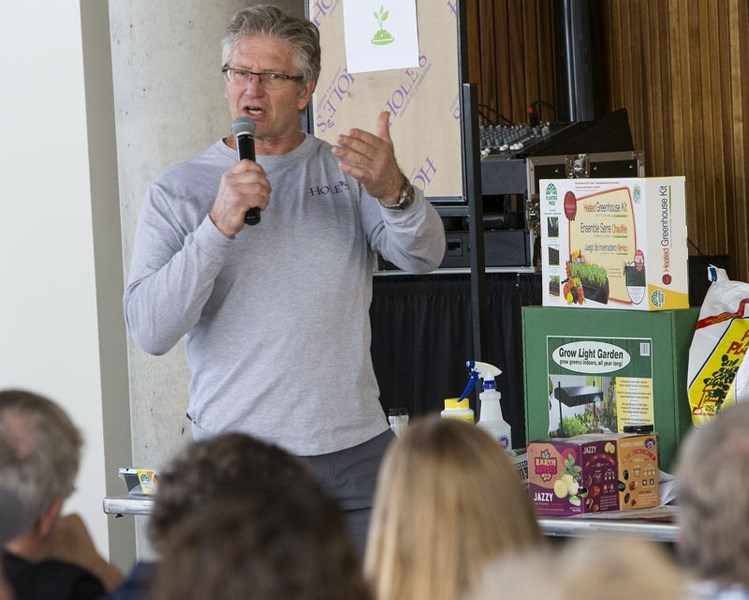If you insist on eating vegetables and fruits, be prepared to pay more.
A plunging loonie, unstable weather patterns, and shrinking agricultural land is creating a nightmare for shoppers across the country.
Since the majority of Canada’s land mass is above the 49th parallel, we import about 75 to 80 per cent of our fruits and vegetables.
With slumping oil prices and the dollar hovering at 71 cents next to the American dollar, prices have spiked in the produce aisles from cauliflower and oranges to cucumbers and grapes.
In November 2014, tomatoes trading at $1.99 are now going for $3.99. Statistics Canada said the price of fresh fruit has spiked by 12.4 per cent since 2014 while fresh veggies are up 14.4 per cent. It’s a big hit to the pocket book.
The University of Guelph just completed a 2016 food price report stating that the weaker Canadian dollar will force families on average to spend an additional $345 on food this year.
California has traditionally been our cheap supplier of fruits and vegetables. In 2014, we imported $2.7 billion worth of fruits, nuts and vegetables from the southern state.
However, for the past four years, it has undergone a ravaging drought that destroyed millions of acres of cropland, dried out rivers and exhausted underground aquifers.
This year’s El NiĹ„o, characterized as the “Godzilla” of El NiĹ„os is bringing rain. But a severe El NiĹ„o falling on parched, impermeable soil causes flooding, mudslides and erosion.
Heavy rains also tend to create seed rot, foliage damage, blight, rust, mildew and fungi – again limiting the quantities of for-sale produce. In January, El NiĹ„o’s severe flooding in the United States and Mexico contributed to supply shortages and price increases.
For the Canadian consumer there is little relief at the produce aisle. Sourcing vegetables and fruits from developing countries is an option. However, prices at the till would still remain high. Whether produce is from California, Chile or South Africa, it is traded in American dollars.
Jim Hole offers a solution – grow your own vegetables. The St. Albert entrepreneur spent his childhood working the soil in his parent’s horticulture business.
Through the decades the growers spotted a noticeable trend that repeats during economic downturns. People cut out luxuries such as holiday trips and spend summers in the backyard gardening and growing their own vegetables, Hole says.
With the Alberta economy in the tank, he recently booked three vegetable growing seminars that provided practical tips for gardeners. An astonishing 450 people showed up.
“But it was great to see so many people coming out,” says Hole, who spent as much time at the Enjoy Centre answering individual questions as delivering his tips.
Never too early to start planting, he discussed germinating seeds in flats, growing sturdy indoor transplants, temperature control, soil preparation, fertilizer types, weeds and pest control.
For instance, did you know that alyssum makes a good companion plant to lettuce but that ladybugs are not the best aphid predators? Hole cautions against purchasing ladybugs as a pest control.
“You’re introducing a species that is not native to Alberta. And after you’ve spent all that money, they’re not going to stick around ’cause they like you,” he says.
Hole also demonstrated various high-end tools and encouraged his audience to buy well-manufactured products over cheaply built, cut-rate apparatus that breaks easily.
“As my grandmother would say, ‘Only the rich can afford to buy cheap.’ ”
Hole also spent a great deal of time discussing soil types and noted one common mistake many gardeners make is failing to obtain sample tests of the right acidity levels.
“I’ve had people come in with a typical clay soil and they’d put sand in it. Don’t put sand in clay soil. You get concrete.”
Not shy about asking questions, gardeners from the novice to veterans jumped in on a variety of topics from root maggots, trimming raspberries and tomato spirals to vegetable fabric, potato fungi and rain barrels.
The sessions were originally promoted as a way to save money on the grocery bill. Sowing a $2 packet of carrot seeds is a no brainer compared to buying $4 bundle of five carrots at the grocery store.
However, Hole agreed that the initial costs of building a garden might mitigate savings in the first year.
“Your return on the investment is in the long term year after year. And carrots and potatoes always taste better when grown in your own garden.”
The free sessions were so successful that Hole has booked two more on Saturday, Feb. 20 at 11 a.m. and Sunday, Feb. 21 at 1 p.m. Registration required. Call 780-419-6800.




